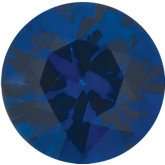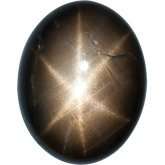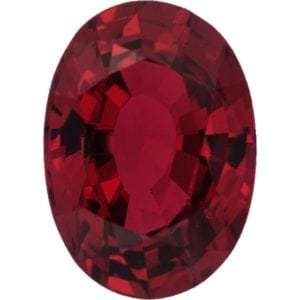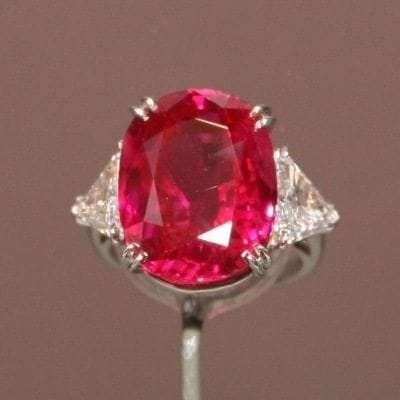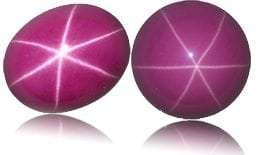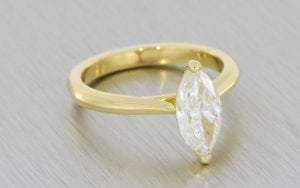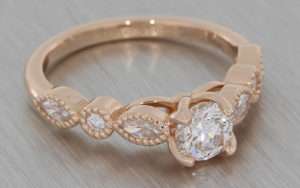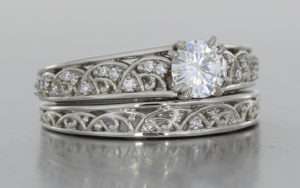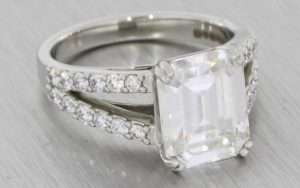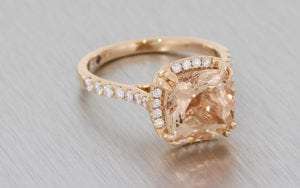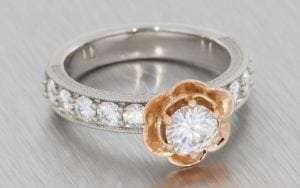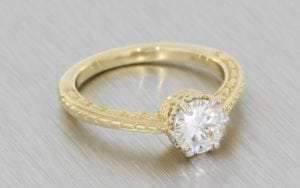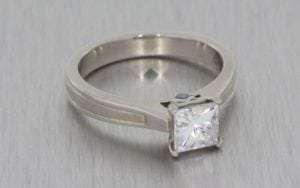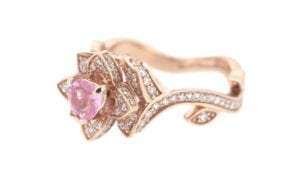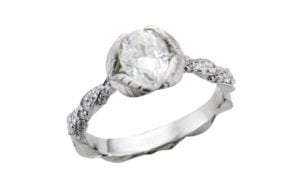Navigation:
→ Diamond Certification
→ Anatomy of a Diamond
→ The Evolution Of Diamond Cutting


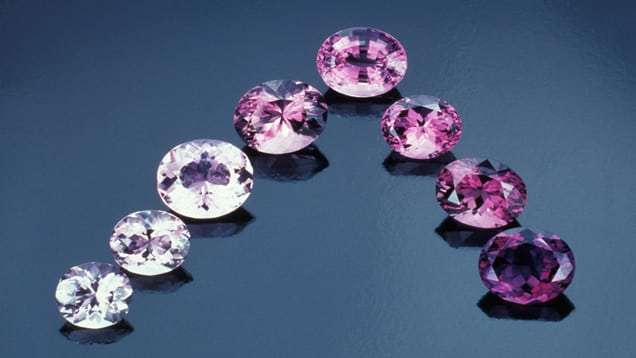
This chart is a 3D way of imaging the hue, tone and saturation and how they work together.
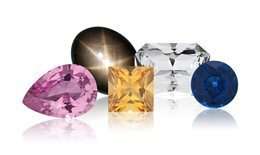
What Is A Sapphire?
Belonging to the corundum family which includes Ruby, sapphires are a very durable and versatile choice for an engagement ring. It is most well known for its velvety blue hues, but also comes in a vast array of the other colours of the rainbow, the rarest and most expensive being the ‘Padparadscha’ sapphire which translates from ancient sanskrit as lotus flower. There have been many well known pieces of jewellery which have been set with sapphires of all colours most recently Kate Middleton, formerly Princess Diana’s engagement ring.
Read on to learn more about the specific colours.
Blue Sapphire
Hardness: 9 Mohs
Enhancement Code: Heating
Quality Information:
A: Medium to dark navy, little or no colour zoning; slightly included; good cut
AA: Medium navy to royal blue; eye clean; good brilliance; good cut; good polish
Ceylon A: Medium light to medium blue, little or no colour zoning; good cut; good polish
Ceylon AA: Medium to medium dark blue, little or no colour zoning; good cut; good polish
SWAROVSKI GEMS™ Bright Blue Fine: Medium navy blue; eye clean; excellent brilliance; excellent machine cut
SWAROVSKI GEMS™ Top Blue Fine: Medium to dark navy blue, no colour zoning; eye clean; excellent brilliance, excellent machine cut
Care: Rated “excellent” for everyday wear. Avoid exposure to heat and contact with chemicals. To clean, gently scrub with a soft toothbrush and a solution of mild dish soap and warm water or clean in an at-home ultrasonic unit.
Major Sources: Australia, Cambodia, East Africa, India, Kashmir, Myanmar, Sri Lanka, Thailand, United States
Belonging to the mineral family- Corundum, like it’s sister Ruby, the sapphire is a stunning choice for jewellery, being very hard and coming in a great range of colours, most famously the breathtaking blue of Sapphire that has captured man’s imagination for millennia. The ancients believed that Blue Sapphire had the ability to make peace between warring parties and could influence the spirit world. An enduring symbol for loyalty and trust, it’s frequently chosen to celebrate engagements or anniversaries. Perhaps the best known modern Sapphire is the 18 carat oval stunner that announced Princess Diana’s engagement, and then her son’s engagement to the Duchess of Cambridge.
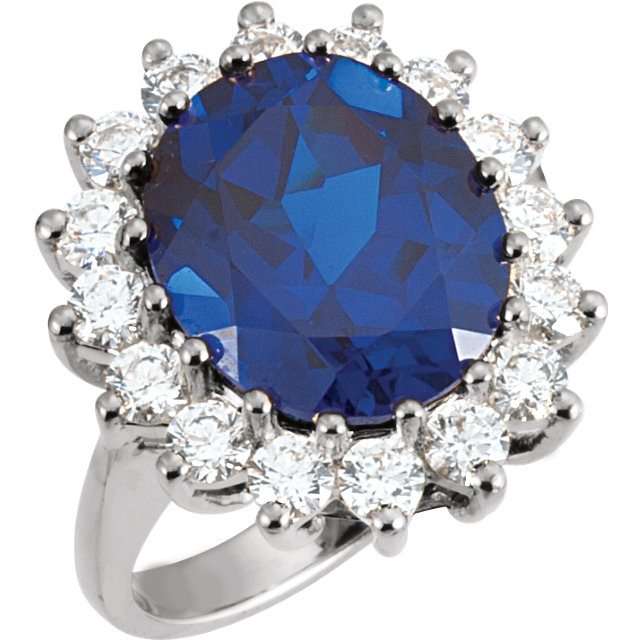
Padparadscha Sapphire
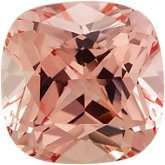
Enhancement Code: Heating
Quality Information:
Delicate pinkish orange color
Care: Rated “excellent” for everyday wear. Avoid exposure to heat and contact with chemicals. To clean, gently scrub with a soft toothbrush and a solution of mild dish soap and warm water or clean in an at-home ultrasonic unit.
Major Sources: Sri Lanka
A special orangy pink sapphire color is called padparadscha, which means “lotus flower” in ancient Sanskrit, the language spoken in Sri Lanka. These are the rarest and most highly prized variety of sapphire, second only to the Kashmir blue sapphires. Stones from Sri Lanka were initially the only ones labeled with this marketable name. There’s no telling how many padparadscha’s have been sifted from Sri Lankan river gravel throughout history, However a Padparadscha can only be named this if it falls within a very small parameter of colour, if there is any reddish orange, or brown in them, they won’t be able to have the unique name.
Black And Blue Star Sapphire
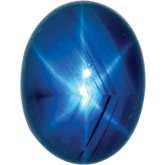
Enhancement Code: Natural
Quality Information:
Black Standard: Charcoal gray to dark brown; good star (with light); good cut; good polish; medium dome
Blue AA: Dark blue with patches of white; good star (with light); good cut; good polish; medium dome
Care: Rated “excellent” for everyday wear. Avoid exposure to heat and contact with chemicals. To clean, gently scrub with a soft toothbrush and a solution of mild dish soap and warm water or clean in an at-home ultrasonic unit.
Major Sources: Australia, Cambodia, East Africa, India, Myanmar, Sri Lanka, Thailand
Star sapphires are unique in that they contain small inclusions in their structure that align in such a way that they reflect a magical six-pointed star. Perhaps the most dramatic example of star sapphires is the black variety, with the star shining brightly from the dark background. The largest star sapphire on record was discovered in the 1930s. Known as the Black Star of Queensland, it astonishes at a whopping 733 carats!
Combining the wonder of the star pattern with the celestial blue colour most associated with sapphires makes for a heavenly combination. This unusual and handsome gem is popular in both men’s and women’s designs. Three centuries ago, the incredible Star of India was discovered. This rare jewel not only unusually displays stars on both sides, it weighs a stunning 536 carats and is the size of a golf ball!
Pink Sapphire
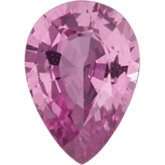
Enhancement Code: Heating
Quality Information:
A: Light to medium light pink, little or no colour zoning; slightly included; good brilliance; good cut; good polish
AA: Medium pink, little or no colour zoning; eye clean; good brilliance; good cut; good polish
SWAROVSKI GEMS™ Fine: Light to medium pink; eye clean; excellent brilliance; excellent machine cut
Care: Rated “excellent” for everyday wear. Avoid exposure to heat and contact with chemicals. To clean, gently scrub with a soft toothbrush and a solution of mild dish soap and warm water or clean in an at-home ultrasonic unit.
Major Sources: Australia, Cambodia, East Africa, India, Myanmar, Sri Lanka, Thailand, United States
Although the name sapphire is derived from the Greek meaning “blue,” sapphires, like the sky can dazzle in many colours. One of the rarest is the beautifully feminine pink variety. Ranging in colour from a delicate pastel to a vibrantly tropical pink, this winner is romantic and vibrant, which explains its continuing risein popularity.
White Sapphire
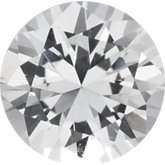
Enhancement Code: Heating
Quality Information:
AA: Near colourless (may be very slightly yellow, grey or blue); eye clean; good brilliance; good cut; good polish
Care: Rated “excellent” for everyday wear. Avoid exposure to heat and contact with chemicals. To clean, gently scrub with a soft toothbrush and a solution of mild dish soap and warm water, or clean in an at-home ultrasonic unit.
Major Sources: Australia, Cambodia, East Africa, Madagascar, Sri Lanka
Before cubic zirconia, white sapphire was often used as a substitute for diamonds. Now, white sapphire is coming into its own. Its unique beauty lies in purely reflecting white light.
Yellow Sapphire
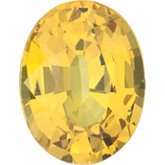
Enhancement Code: Heating
Quality Information:
AA: Medium yellow; eye clean; good brilliance; excellent cut; excellent polish
Care: Rated “excellent” for everyday wear. Avoid exposure to heat and contact with chemicals. To clean, gently scrub with a soft toothbrush and a solution of mild dish soap and warm water, or clean in an at-home ultrasonic unit.
Major Sources: Australia, Cambodia, East Africa, Sri Lanka, Thailand
One of the most popular gems in India, yellow sapphires range from a lovely warm gold to the naturally beautiful canary yellow. Thought to promote wisdom and bring prosperity, this sunny gemstone is rapidly gaining in demand in the US as well.
To find out more about sapphires in a particular shade, don’t hesitate to get in touch with one of our highly trained gemstone specialists.
Meta data?
What Is A Ruby?
Rating at 9 on the Mohs scale, rubies, just like sapphires are excellent choices for engagement rings. This precious gemstone has been popular throughout history and will always have a place in the Top 3 of precious stones (Rubies, Sapphires and Emeralds).

Characteristics
Hardness: 9 Mohs
Enhancement Code: Heating
Quality Information:
A: Medium pinkish red; slightly included; good cut; good polish
AA: Medium dark pinkish red; eye clean; good cut; good polish
Care: Rated “excellent” for everyday wear. Avoid exposure to heat and contact with chemicals. To clean, gently scrub with a soft toothbrush and a solution of mild dish soap and warm water or clean in an at-home ultrasonic unit.
Major Sources: Afghanistan, Cambodia, India, Kenya, Madagascar, Myanmar, Pakistan, Sri Lanka, Tanzania, Thailand
Belonging to the mineral family Corundum, a sister to the well known Sapphire. The “king of gems,” Ruby is one of the world’s oldest and most revered gemstones. It is also one of the rarest. The mineral Chromium is responsible for the gem’s startling colour. Rubies with hardly any inclusions are so rare that large stones of good colour fetch higher prices at auction than even diamonds. The top quality ruby is nicknamed ‘pigeon’s blood’ ruby. Originating from Burma where the Burmese name for the finest and most vivid stones is ‘ko-twe’ which literally means pigeon blood. If the stone has secondary colours which gives it more of a pink or purplish colour it could also be classified as pink or purple sapphire.
The 23.1 carat Carmen Lucía ruby is one of the greatest treasures of the Smithsonian, although Elizabeth Taylor’s 8.24 carat ring may carry more glamour.
Hardness: 9 Mohs
Enhancement Code: Heat treatment
Quality Information:
Light to dark purplish red to purple-red. The more intense the star, the higher the quality.
Care: Rated “excellent” for everyday wear. Avoid exposure to heat and contact with chemicals. To clean, gently scrub with a soft toothbrush and a solution of mild dish soap and warm water or clean in an at-home ultrasonic unit.
Major Sources: Australia, Cambodia, East Africa, India, Myanmar, Sri Lanka, Thailand
Like star sapphire’s these rubies have many rutile needles which when the stone is cut into a cabochon can feature a ‘phenomenon’ called ‘Asterism’. This means you can see a 6 pointed star which glides across the stone as the stone, the viewer or the light source moves. The best stones have a sharp star and a rich red colour similar to the best ruby colours. The biggest stone is known as the ‘Rosser Reeves Star Ruby’ which is 138.7ct, which is on show in the Smithsonian Institute in Washington.
Ruby is the gem for those born in July as well as those born under the sign of Aries. It’s also a stunning option for the celebration of the 40th wedding anniversary.
To learn more about rubies and how you could incorporate these into your perfect piece of jewellery, get in touch with one of our gemstone experts today.
What Is An Emerald?
The rich and colourful history of emeralds is almost like no other stone, it is believed that they were mined in Egypt as early as 330BC for the infamous Queen Cleopatra who had a infinite passion for emeralds. Also in the Boyaca region in Colombia the natives started mining these precious stones as early as 1000BC.
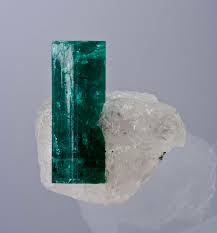
Characteristics
Hardness: 7.5-8 Mohs
Enhancement Code: Oiling/Resin Infusion
Quality Information:
A: Medium colour; slightly included; good cut; good polish
AA: Medium dark to dark colour; slightly included; high brilliance; good cut; good polish
Care: Rated “fair to good” for everyday wear with care. Avoid exposure to heat, contact with chemicals, and protect from scratches and harsh blows. To clean, gently scrub with a soft toothbrush and a solution of mild dish soap and warm water.
Major Sources: Afghanistan, Brazil, Colombia, India, Pakistan, Russia, Zambia, Zimbabwe
The source of many legends and mysteries, the emerald was gathered in Cleopatra’s Mines near the Red Sea, worshipped by the Incas and Aztecs, and treasured by the Maharajas of India. Its rich green colour makes it a fitting birthstone for the month of May. Emerald also celebrates the 20th, 35th and 55th wedding anniversaries.
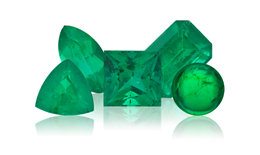
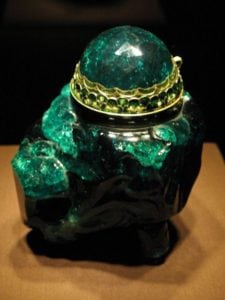
From the mineral family Beryl, a species that also includes stones like aquamarine, morganite, green beryl, yellow beryl and red beryl (the rarest form). Emeralds are reasonably strong at 7.5-8 on the Mohs scale however is prone to fractures and inclusions which reduces the durability. The inclusions in emeralds have been informally nicknamed ‘jardin’- the french word for garden. This is because some inclusions can look quite mossy or garden-like. To counteract the appearance of inclusions it has become standard practice in recent years that emeralds can be soaked in resin or oil which has a more similar RI to emerald. Over time these substances can get old and might either seep out or get a crackled like appearance. But don’t fear emeralds can be re=oiled and with some TLC be back to their former glory.
To learn more about emeralds and how best to set them in your ideal ring feel free to get in touch with one of our gemstone experts.
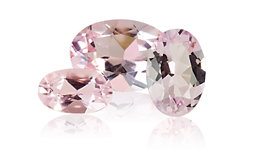
Hardness: 7.5-8 Mohs
Enhancement Code: Heating
Quality Information:
AA: Light to medium light pink; eye clean; good cut
Care: Rated “good” for everyday wear. Avoid exposure to heat, contact with chemicals, and protect from scratches and harsh blows. To clean, gently scrub with a soft toothbrush and a solution of mild dish soap and warm water.
Major Sources: Brazil, Madagascar, United States
The first gem quality morganite was discovered in Madagascar and was named in honor of J.P. Morgan, the famous banker, who was also an avid mineral collector. This charming gem is in the beryl family. The gentle pink hue of Morganite is due to traces of manganese.
The largest gem quality morganite was discovered in Maine in 1989, and was subsequently named the Rose of Maine. This highly brilliant stone is ideal for romantic designs to highlight its feminine beauty.
Origin
The origin of the Moissanite is a tale of fallen stars, exploration and discovery and a century long scientific endeavour. It was first found by Henri Moissan in 1893 when he was exploring a Meteor crater called the ‘Diablo Canyon’ in Arizona. Originally, Henri believed he had found diamonds in the site, but later discovered that they were naturally occurring microscopic Silicon Carbide particles. He wanted to replicate these in his lab, but sadly he did not live long enough to see this to fruition.
Is it Ethical?
Almost all Moissanite is purposely lab grown and precision engineered due its rarity and scarcity in the natural world. This allows for each stone to be created with the highest regard for environmental and ethical standards, have traceable origins and be socially responsible and sustainable. It is one of the very few stones available that guarantees it is 100% conflict free and zero mining heritage. With the Moissanite being born in a controlled environment, the stone has some similar optical characteristics of a diamond, but with features that are compositionally distinct.
Characteristics
On the Refractive Index, a diamond measures in at a high 2.417, Moissanite however, scores an outstanding 2.691, showcasing its propensity for the highest quality of Brilliance. Moissanites exhibit a different form of brilliance than that of a diamond due to the difference in faceting pattern. The fiery, rainbow flashes emitted by Moissanites are evocative of its meteoric origins. Not only does Moissanite provide striking light refraction and dispersion that supersedes all gemstones, it is extremely durable, practical and hard-wearing being a minimal .75 less than the hardest wear of a Diamond on the MOH’S Scale of Hardness.
Below is a comparative table of the differences between Moissanite versus other precious gemstones as illustrated by Charles & Colvard.
Brilliance Refraction Index (RI) |
Fire Dispersion |
Moh’s Hardness Scale |
MOISSANITE:2.65-2.69 |
MOISSANITE:0.104 |
MOISSANITE:9.25 |
DIAMOND: 2.42 |
DIAMOND: 0.044 |
DIAMOND: 10 |
RUBY: 1.77 |
RUBY: 0.018 |
RUBY: 9 |
SAPPHIRE: 1.77 |
SAPPHIRE: 0.018 |
SAPPHIRE: 9 |
EMERALD: 1.58 |
EMERALD: 0.014 |
EMERALD: 7.5 |

- Beauty: Depth of beauty
- Affordable: Up to 1/10th of the price of Diamonds
- Ethical: 100% conflict free, zero mining and sustainable





